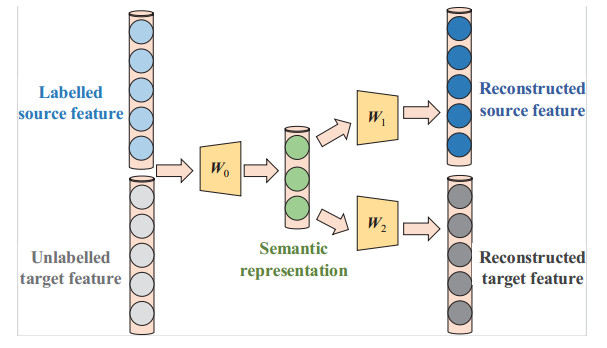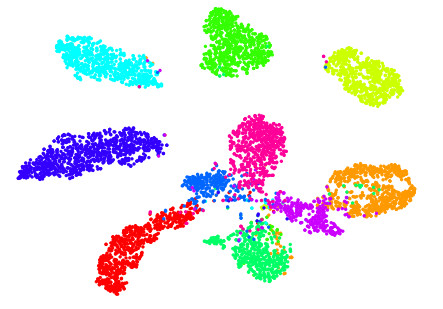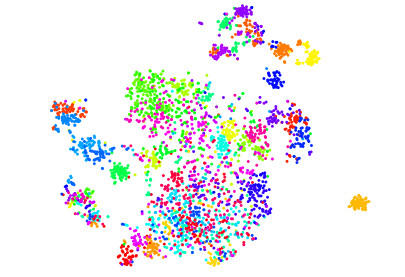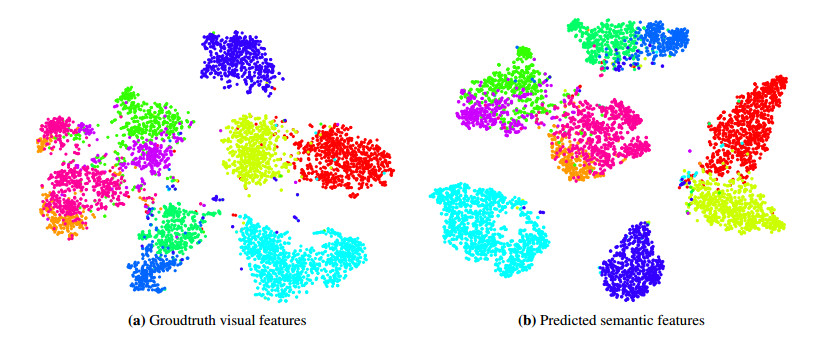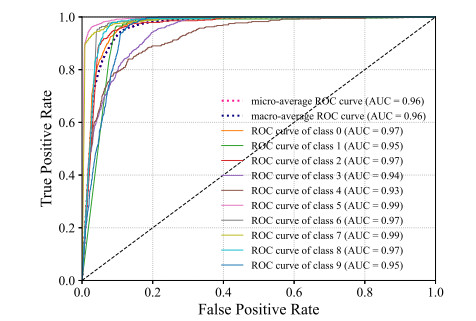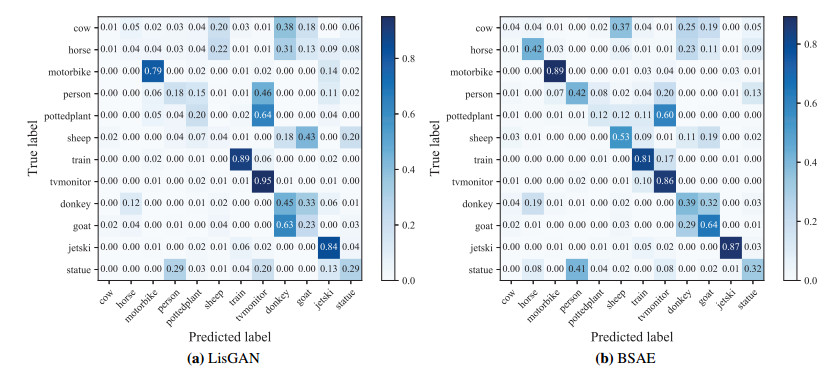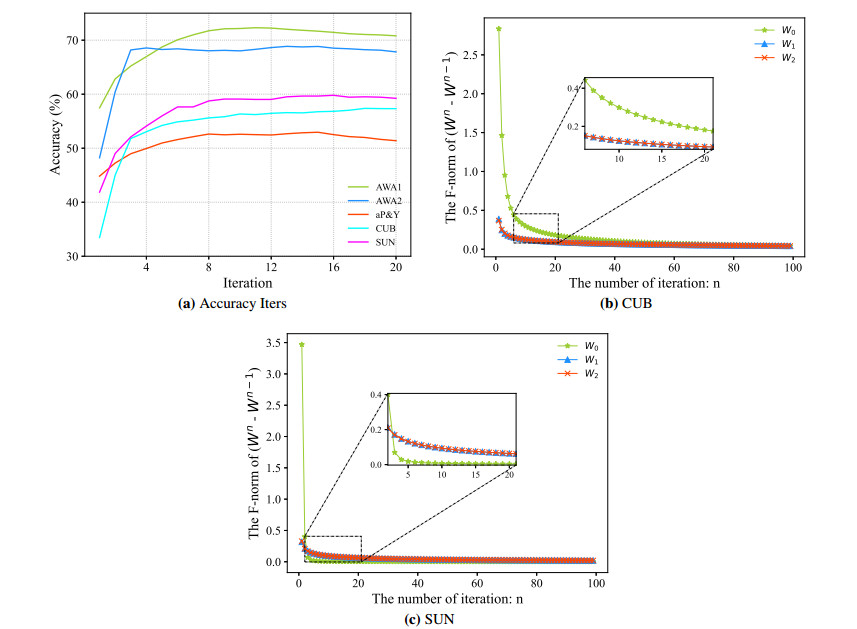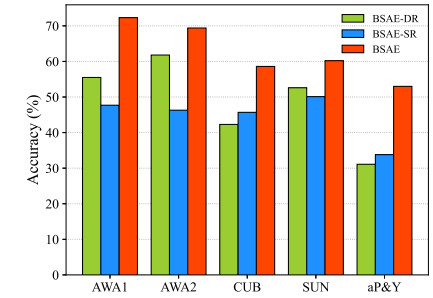|
[1]
|
M. Everingham, S. M. Eslami, L. Gool, C. K. Williams, J. Winn, A. Zisserman, The pascal visual object classes challenge: a retrospective, Int. J. Comput. Vis., 111 (2015), 98–136. https://doi.org/10.1007/s11263-014-0733-5 doi: 10.1007/s11263-014-0733-5

|
|
[2]
|
S. J. Dickinson, A. Leonardis, B. Schiele, M. J. Tarr, Object categorization: computer and human vision perspectives, Cambridge University Press, Cambridge, 2009. https://doi.org/10.1017/cbo9780511635465
|
|
[3]
|
X. Zhang, Y. H. Yang, Z. Han, H. Wang, C. Gao, Object class detection: a survey, ACM Comput. Surv., 46 (2013), 1–53. https://doi.org/10.1145/2522968.2522978 doi: 10.1145/2522968.2522978

|
|
[4]
|
Y. Li, S. Wang, Q. Tian, X. Ding, Feature representation for statistical-learning-based object detection: a review, Pattern Recognit., 48 (2015), 3542–3559. https://doi.org/10.1016/j.patcog.2015.04.018 doi: 10.1016/j.patcog.2015.04.018

|
|
[5]
|
Z. Zhao, P. Zheng, S. Xu, X. Wu, Object detection with deep learning: a review, IEEE Trans. Neural Netw. Learn. Syst., 30 (2019), 3212–3232. https://doi.org/10.1109/tnnls.2018.2876865 doi: 10.1109/tnnls.2018.2876865

|
|
[6]
|
K. Oksuz, B. C. Cam, S. Kalkan, E. Akbas, Imbalance problems in object detection: a review, IEEE Trans. Pattern Anal. Mach. Intell., 43 (2021), 3388–3415. https://doi.org/10.1109/tpami.2020.2981890 doi: 10.1109/tpami.2020.2981890

|
|
[7]
|
L. Liu, W. Ouyang, X. Wang, P. Fieguth, J. Chen, X. Liu, et al. Deep learning for generic object detection: a survey, Int. J. Comput. Vis., 128 (2020), 261–318. https://doi.org/10.1007/s11263-019-01247-4 doi: 10.1007/s11263-019-01247-4

|
|
[8]
|
S. Ghosh, N. Das, I. Das, U. Maulik, Understanding deep learning techniques for image segmentation, ACM Comput. Surv., 52 (2019), 1–35. https://doi.org/10.1145/3329784 doi: 10.1145/3329784

|
|
[9]
|
S. Minaee, Y. Y. Boykov, F. Porikli, A. J. Plaza, N. Kehtarnavaz, D. Terzopoulos, Image segmentation using deep learning: a survey, IEEE Trans. Pattern Anal. Mach. Intell., (2021). https://doi.org/10.1109/tpami.2021.3059968 doi: 10.1109/tpami.2021.3059968

|
|
[10]
|
R. Datta, D. Joshi, J. Li, J. Z. Wang, Image retrieval: ideas, influences, and trends of the new age, ACM Comput. Surv., 40 (2008), 1–60. https://doi.org/10.1145/1348246.1348248 doi: 10.1145/1348246.1348248

|
|
[11]
|
D. Zhang, M. M. Islam, G. Lu, A review on automatic image annotation techniques, Pattern Recognit., 45 (2012), 346–362. https://doi.org/10.1016/j.patcog.2011.05.013 doi: 10.1016/j.patcog.2011.05.013

|
|
[12]
|
X. Li, T. Uricchio, L. Ballan, M. Bertini, C. G. Snoek, A. D. Bimbo, Socializing the semantic gap: a comparative survey on image tag assignment, refinement, and retrieval, ACM Comput. Surv., 49 (2016), 1–39. https://doi.org/10.1145/2906152 doi: 10.1145/2906152

|
|
[13]
|
P. Wiriyathammabhum, D. Summers-Stay, C. Fermüller, Y. Aloimonos, Computer vision and natural language processing: recent approaches in multimedia and robotics, ACM Comput. Surv., 49 (2020), 1–44. https://doi.org/10.1145/3009906 doi: 10.1145/3009906

|
|
[14]
|
Y. Belinkov, J. Glass, Analysis methods in neural language processing: a survey, Trans. Assoc. Comput. Linguist., 7 (2019), 49–72. https://doi.org/10.1162/tacl_a_00254 doi: 10.1162/tacl_a_00254

|
|
[15]
|
K. Gauman, B. Leibe, Visual object recognition, Synth. Lect. Artif. Intell. Mach. Learn., 5 (2011), 1–181. https://doi.org/10.2200/S00332ED1V01Y201103AIM011 doi: 10.2200/S00332ED1V01Y201103AIM011

|
|
[16]
|
Y. Bengio, A. Courville, P. Vincent, Representation learning: a review and new perspectives, IEEE Trans. Pattern Anal. Mach. Intell., 35 (2013), 1798–1828. https://doi.org/10.1109/tpami.2013.50 doi: 10.1109/tpami.2013.50

|
|
[17]
|
I. Goodfellow, Y. Bengio, A. Courville, Deep learning, MIT Press, Cambridge, 2016.
|
|
[18]
|
G. Litjens, T. Kooi, B. E. Bejnordi, A. A. A. Setio, F. Ciompi, M. Ghafoorian, et al., A survey on deep learning in medical image analysis, Med. Image Anal., 42 (2017), 60–88. https://doi.org/10.1016/j.media.2017.07.005 doi: 10.1016/j.media.2017.07.005

|
|
[19]
|
J. Gu, Z. Wang, J. Kuen, L. Ma, A. Shahroudy, B. Shuai, et al., Recent advances in convolutional neural networks, Pattern Recognit., 77 (2018), 354–377. https://doi.org/10.1016/j.patcog.2017.10.013 doi: 10.1016/j.patcog.2017.10.013

|
|
[20]
|
M. G. Kendall, A. Stuart, J. K. Ord, Kendall's advanced theory of statistics, 5th edition, Oxford University Press, Oxford, 1987.
|
|
[21]
|
J. Deng, W. Dong, R. Socher, L. Li, K. Li, F. Li, Imagenet: a large-scale hierarchical image database, in IEEE Conf. Comput. Vis. Pattern Recognit., IEEE, (2009), 248–255. https://doi.org/10.1109/cvpr.2009.5206848
|
|
[22]
|
California Institute of Technology, The caltech-ucsd birds-200-2011 dataset, Computation & Neural Systems Technical Report of California Institute of Technology, 2011. Available from: http://www.vision.caltech.edu/visipedia/CUB-200-2011.html.
|
|
[23]
|
Y. Wang, Q. Yao, J. T. Kwok, L. M. Ni, Generalizing from a few examples: a survey on few-shot learning, ACM Comput. Surv., 53 (2020), 1–34. https://doi.org/10.1145/3386252 doi: 10.1145/3386252

|
|
[24]
|
W. J. Scheirer, A. de Rezende Rocha, A. Sapkota, T. E. Boult, Toward open set recognition, IEEE Trans. Pattern Anal. Mach. Intell., 35 (2012), 1757–1772. https://doi.org/10.1109/tpami.2012.256 doi: 10.1109/tpami.2012.256

|
|
[25]
|
C. Geng, S. Huang, S. Chen, Recent advances in open set recognition: a survey, IEEE Trans. Pattern Anal. Mach. Intell., 43 (2021), 3614–3631. https://doi.org/10.1109/tpami.2020.2981604 doi: 10.1109/tpami.2020.2981604

|
|
[26]
|
I. Biederman, Recognition-by-components: a theory of human image understanding, Psychol. Rev., 94 (1987), 115–147. https://doi.org/10.1037/0033-295x.94.2.115 doi: 10.1037/0033-295x.94.2.115

|
|
[27]
|
C. H. Lampert, H. Nickisch, S. Harmeling, Attribute-based classification for zero-shot visual object categorization, IEEE Trans. Pattern Anal. Mach. Intell., 36 (2013), 453–465. https://doi.org/10.1109/tpami.2013.140 doi: 10.1109/tpami.2013.140

|
|
[28]
|
W. Xu, Y. Xian, J. Wang, B. Schiele, Z. Akata, Attribute prototype network for zero-shot learning, preprint, arXiv: 2008.08290.
|
|
[29]
|
S. Changpinyo, W. L. Chao, B. Gong, F. Sha, Classifier and exemplar synthesis for zero-shot learning, Int. J. Comput. Vis., 128 (2020), 166–201. https://doi.org/10.1007/s11263-019-01193-1 doi: 10.1007/s11263-019-01193-1

|
|
[30]
|
Z. Ji, H. Wang, Y. Pang, L. Shao, Dual triplet network for image zero-shot learning, Neurocomputing, 373 (2020), 90–97. https://doi.org/10.1016/j.neucom.2019.09.062 doi: 10.1016/j.neucom.2019.09.062

|
|
[31]
|
Y. Ma, X. Xu, F. Shen, H. Shen, Similarity preserving feature generating networks for zero-shot learning, Neurocomputing, 406 (2020), 333–342. https://doi.org/10.1016/j.neucom.2019.08.111 doi: 10.1016/j.neucom.2019.08.111

|
|
[32]
|
M. M. Palatucci, D. A. Pomerleau, G. E. Hinton, T. Mitchell, Zero-shot learning with semantic output codes, in Ann. Conf. Neural Inf. Process. Syst., MIT Press, 22 (2009), 1410–1418.
|
|
[33]
|
M. Johnson, M. Schuster, Q. V. Le, M. Krikun, Y. Wu, Z. Chen, et al., Google' s multilingual neural machine translation system: enabling zero-shot translation, Trans. Assoc. Comput. Linguist., 5 (2017), 339–351. https://doi.org/10.1162/tacl_a_00065 doi: 10.1162/tacl_a_00065

|
|
[34]
|
N. Nakashole, R. Flauger, Knowledge distillation for bilingual dictionary induction, in Conf. Empirical Methods Nat. Language Process., ACL, (2017), 2497–2506. https://doi.org/10.18653/v1/d17-1264
|
|
[35]
|
H. Larochelle, D. Erhan, Y. Bengio, Zero-data learning of new tasks, in AAAI Conf. Artif. Intell., AAAI, 1 (2008), 646–651.
|
|
[36]
|
C. H. Lampert, H. Nickisch, S. Harmeling, Learning to detect unseen object classes by between-class attribute transfer, in IEEE Conf. Comput. Vis. Pattern Recognit., IEEE, (2009), 951–958. https://doi.org/10.1109/cvpr.2009.5206594
|
|
[37]
|
N. Mohammad, M. Tomas, B. Samy, S. Yoram, S. Jonathon, F. Andrea, et al., Zero-shot learning by convex combination of semantic embeddings, preprint, arXiv: 1312.5650.
|
|
[38]
|
A. Frome, G. S. Corrado, J. Shlens, S. Bengio, J. Dean, M. Ranzat, et al., Devise: a deep visual-semantic embedding model, in Ann. Conf. Neural Inform. Process. Syst., MIT Press, 2 (2013), 2121–2129.
|
|
[39]
|
R. Socher, M. Ganjoo, H. Sridhar, O. Bastani, C. D. Manning, A. Y. Ng, Zero-shot learning through cross-modal transfer, in Ann. Conf. Neural Inform. Process. Syst., MIT Press, 26 (2013), 935–943.
|
|
[40]
|
S. Reed, Z. Akata, H. Lee, B. Schiele, Learning deep representations of fine-grained visual descriptions, in IEEE Conf. Comput. Vis. Pattern Recognit., IEEE, (2016), 49–58. https://doi.org/10.1109/cvpr.2016.13
|
|
[41]
|
Z. Akata, S. Reed, D. Walter, H. Lee, B. Schiele, Evaluation of output embeddings for fine-grained image classification, in IEEE Conf. Comput. Vis. Pattern Recognit., IEEE, (2015), 2927–2936. https://doi.org/10.1109/cvpr.2015.7298911
|
|
[42]
|
Y. Xian, Z. Akata, G. Sharma, Q. Nguyen, M. Hein, B. Schiele, Latent embeddings for zero-shot classification, in IEEE Conf. Comput. Vis. Pattern Recognit., IEEE, (2016), 69–77. https://doi.org/10.1109/cvpr.2016.15
|
|
[43]
|
Y. Fu, T. M. Hospedales, T. Xiang, S. Gong, Transductive multi-view zero-shot learning, IEEE Trans. Pattern Anal. Mach. Intell., 37 (2015), 2332–2345. https://doi.org/10.1109/tpami.2015.2408354 doi: 10.1109/tpami.2015.2408354

|
|
[44]
|
S. Rahman, S. Khan, F. Porikli, A unified approach for conventional zero-shot, generalized zero-shot, and few-shot learning, IEEE Trans. Image Process., 27 (2018), 5652–5667. https://doi.org/10.1109/tip.2018.2861573 doi: 10.1109/tip.2018.2861573

|
|
[45]
|
S. Daghaghi, T. Medini, A. Shrivastava, Sdm-net: a simple and effective model for generalized zero-shot learning, preprint, arXiv: 1909.04790.
|
|
[46]
|
Z. Jia, Z. Zhang, L. Wang, C. Shan, T. Tan, Deep unbiased embedding transfer for zero-shot learning, IEEE Trans. Image Process., 29 (2019), 1958–1971. https://doi.org/10.1109/tip.2019.2947780 doi: 10.1109/tip.2019.2947780

|
|
[47]
|
B. Romera-Paredes, P. H. S. Torr, An embarrassingly simple approach to zero-shot learning, in Int. Conf. Machine Learn., ACM, 37 (2015), 2152–2161. https://doi.org/10.1007/978-3-319-50077-5_2
|
|
[48]
|
E. Kodirov, T. Xiang, S. Gong, Semantic autoencoder for zero-shot learning, in IEEE Conf. Comput. Vis. Pattern Recognit., IEEE, (2017), 3174–3183. https://doi.org/10.1109/cvpr.2017.473
|
|
[49]
|
S. Changpinyo, W. L. Chao, B. Gong, F. Sha, Synthesized classifiers for zero-shot learning, in IEEE Conf. Comput. Vis. Pattern Recognit., IEEE, (2016), 5327–5336. https://doi.org/10.1109/cvpr.2016.575
|
|
[50]
|
Y. Xian, T. Lorenz, B. Schiele, Z. Akata, Feature generating networks for zero-shot learning, in IEEE Conf. Comput. Vis. Pattern Recognit., IEEE, (2018), 5542–5551. https://doi.org/10.1109/cvpr.2018.00581
|
|
[51]
|
H. Huang, C. Wang, P. S. Yu, C. Wang, Generative dual adversarial network for generalized zero-shot learning, in IEEE Conf. Comput. Vis. Pattern Recognit., IEEE, (2019), 801–810. https://doi.org/10.1109/cvpr.2019.00089
|
|
[52]
|
S. Xu, Z. Gao, G. Xie, Bi-semantic reconstructing generative network for zero-shot learning, preprint, arXiv: 1912.03877.
|
|
[53]
|
Z. Ye, F. Lyu, L. Li, Q. Fu, J. Ren, F. Hu, Sr-gan: semantic rectifying generative adversarial network for zero-shot learning, in IEEE Int. Conf. Multimedia & Expo, IEEE, (2019), 85–90. https://doi.org/10.1109/icme.2019.00023
|
|
[54]
|
Y. Zhu, M. Elhoseiny, B. Liu, X. Peng, A. Elgammal, A generative adversarial approach for zero-shot learning from noisy texts, in IEEE Conf. Comput. Vis. Pattern Recognit., IEEE, (2018), 1004–1013. https://doi.org/10.1109/cvpr.2018.00111
|
|
[55]
|
A. Mishra, S. Krishna Reddy, A. Mittal, H. A. Murthy, A generative model for zero shot learning using conditional variational autoencoders, in IEEE Conf. Comput. Vis. Pattern Recognit., IEEE, (2018), 2188–2196. https://doi.org/10.1109/cvprw.2018.00294
|
|
[56]
|
Z. Wan, D. Chen, Y. Li, X. Yan, J. Zhang, Y. Yu, et al., Transductive zero-shot learning with visual structure constraint, preprint, arXiv: 1901.01570.
|
|
[57]
|
M. Ye, Y. Guo, Zero-shot classification with discriminative semantic representation learning, in IEEE Conf. Comput. Vis. Pattern Recognit., IEEE, (2017), 7140–7148. https://doi.org/10.1109/cvpr.2017.542
|
|
[58]
|
Z. Akata, F. Perronnin, Z. Harchaoui, C. Schmid, Label-embedding for image classification, IEEE Trans. Pattern Anal. Mach. Intell., 38 (2016), 1425–1438. https://doi.org/10.1109/tpami.2015.2487986 doi: 10.1109/tpami.2015.2487986

|
|
[59]
|
Y. Yu, Z. Ji, X. Li, J. Guo, Z. Zhang, H. Ling, et al., Transductive zero-shot learning with a self-training dictionary approach, IEEE T. Cybern., 48 (2018), 2908–2919. https://doi.org/10.1109/tcyb.2017.2751741 doi: 10.1109/tcyb.2017.2751741

|
|
[60]
|
Y. Shi, W. Wei, Discriminative embedding autoencoder with a regressor feedback for zero-shot learning, IEEE Access, 8 (2020), 11019–11030. https://doi.org/10.1109/access.2020.2964613 doi: 10.1109/access.2020.2964613

|
|
[61]
|
J. Song, C. Shen, Y. Yang, Y. Liu, M. Song, Transductive unbiased embedding for zero-shot learning, in IEEE Conf. Comput. Vis. Pattern Recognit., IEEE, (2018), 1024–1033. https://doi.org/10.1109/cvpr.2018.00113
|
|
[62]
|
V. K. Verma, P. Rai, A simple exponential family framework for zero-shot learning, in Joint European Conference on Machine Learning and Knowledge Discovery in Databases, Springer, (2017), 792–808. https://doi.org/10.1007/978-3-319-71246-8_48
|
|
[63]
|
M. Kan, S. Shan, X. Chen, Bi-shifting auto-encoder for unsupervised domain adaptation, in Int. Conf. Comput. Vis., IEEE, (2015), 3846–3854. https://doi.org/10.1109/cvpr.2017.547
|
|
[64]
|
J. Zhang, W. Li, P. Ogunbona, Joint geometrical and statistical alignment for visual domain adaptation, in IEEE Conf. Comput. Vis. Pattern Recognit., IEEE, (2017), 1859–1867. https://doi.org/10.1109/cvpr.2017.547
|
|
[65]
|
E. Kodirov, T. Xiang, Z. Fu, S. Gong, Unsupervised domain adaptation for zero-shot learning, in Int. Conf. Comput. Vis., IEEE, (2015), 2452–2460. https://doi.org/10.1109/iccv.2015.282
|
|
[66]
|
Y. Liu, Q. Gao, J. Li, J. Han, L. Shao, Zero shot learning via low-rank embedded semantic autoencoder, in International Joint Conference on Artificial Intelligence, Morgan Kaufmann, (2018), 2490–2496. https://doi.org/10.24963/ijcai.2018/345
|
|
[67]
|
Z. Zhang, V. Saligrama, Zero-shot learning via semantic similarity embedding, in Int. Conf. Comput. Vis., IEEE, (2015), 4166–4174. https://doi.org/10.1109/iccv.2015.474
|
|
[68]
|
J. Li, M. Jin, K. Lu, Z. Ding, Z. Huang, Leveraging the invariant side of generative zero-shot learning, in IEEE Conf. Comput. Vis. Pattern Recognit., IEEE, (2019), 7394–7403. https://doi.org/10.1109/cvpr.2019.00758
|
|
[69]
|
M. Radovanović, A. Nanopoulos, M. Ivanović, Hubs in space: popular nearest neighbors in high-dimensional data, J. Mach. Learn. Res., 11 (2010), 2487–2531.
|
|
[70]
|
L. Zhang, T. Xiang, S. Gong, Learning a deep embedding model for zero-shot learning, in IEEE Conf. Comput. Vis. Pattern Recognit., IEEE, (2017), 2021–2030. https://doi.org/10.1109/cvpr.2017.321
|
|
[71]
|
Y. Shigeto, I. Suzuki, K. Hara, M. Shimbo, Y. Matsumoto, Ridge regression, hubness, and zero-shot learning, in Joint European Conference on Machine Learning and Knowledge Discovery in Databases, Springer, (2015), 135–151. https://doi.org/10.1007/978-3-319-23528-8_9
|
|
[72]
|
Y. Wu, W. Cao, Y. Liu, Z. Ming, J. Li, B. Lu, Semantic auto-encoder with l2-norm constraint for zero-shot learning, in Int. Conf. Mach. Learn. Comput., ACM, (2021), 101–105. https://doi.org/10.1145/3457682.3457699
|
|
[73]
|
Y. Li, D. Wang, H. Hu, Y. Lin, Y. Zhuang, Zero-shot recognition using dual visual-semantic mapping paths, in IEEE Conf. Comput. Vis. Pattern Recognit., IEEE, (2017), 3279–3287. https://doi.org/10.1109/cvpr.2017.553
|
|
[74]
|
P. Lancaster, M. Tismenetsky, The theory of matrices: with applications, 2nd edition, Academic Press, Amsterdam, 1985.
|
|
[75]
|
Y. Xian, C. H. Lampert, B. Schiele, Z. Akata, Zero-shot learning – a comprehensive evaluation of the good, the bad and the ugly, IEEE Trans. Pattern Anal. Mach. Intell., 41 (2018), 2251–2265. https://doi.org/10.1109/tpami.2018.2857768 doi: 10.1109/tpami.2018.2857768

|
|
[76]
|
A. Farhadi, I. Endres, D. Hoiem, D. Forsyth, Describing objects by their attributes, in IEEE Conf. Comput. Vis. Pattern Recognit., IEEE, (2009), 1778–1785. https://doi.org/10.1109/cvpr.2009.5206772
|
|
[77]
|
G. Patterson, C. Xu, H. Su, J. Hays, The sun attribute database: beyond categories for deeper scene understanding, Int. J. Comput. Vis., 108 (2014), 59–81. https://doi.org/10.1007/s11263-013-0695-z doi: 10.1007/s11263-013-0695-z

|
|
[78]
|
C. Szegedy, W. Liu, Y. Jia, P. Sermanet, S. Reed, D. Anguelov, et al., Going deeper with convolutions, in IEEE Conf. Comput. Vis. Pattern Recognit., IEEE, (2015), 1–9. https://doi.org/10.1109/cvpr.2015.7298594
|
|
[79]
|
S. M. Shojaee, M. S. Baghshah, Semi-supervised zero-shot learning by a clustering-based approach, preprint, arXiv: 1605.09016.
|
|
[80]
|
Y. Guo, G. Ding, J. Han, Y. Gao, Zero-shot learning with transferred samples, IEEE Trans. Image Process., 26 (2017), 3277–3290. https://doi.org/10.1109/tip.2017.2696747 doi: 10.1109/tip.2017.2696747

|
|
[81]
|
Y. Annadani, S. Biswas, Preserving semantic relations for zero-shot learning, in IEEE Conf. Comput. Vis. Pattern Recognition, IEEE, (2018), 7603–7612. https://doi.org/10.1109/cvpr.2018.00793
|
|
[82]
|
H. Zhang, Y. Long, Y. Guan, L. Shao, Triple verification network for generalized zero-shot learning, IEEE Trans. Image Process., 28 (2019), 506–517. https://doi.org/10.1109/tip.2018.2869696 doi: 10.1109/tip.2018.2869696

|
|
[83]
|
L. Van der Maaten, G. Hinton, Visualizing data using t-sne, J. Mach. Learn. Res., 9 (2008), 2579–2605.
|
|
[84]
|
Z. Zhang, Y. Li, J. Yang, Y. Li, M. Gao, Cross-layer autoencoder for zero-shot learning, IEEE Access, 7 (2019), 167584–167592. https://doi.org/10.1109/access.2019.2953454 doi: 10.1109/access.2019.2953454

|
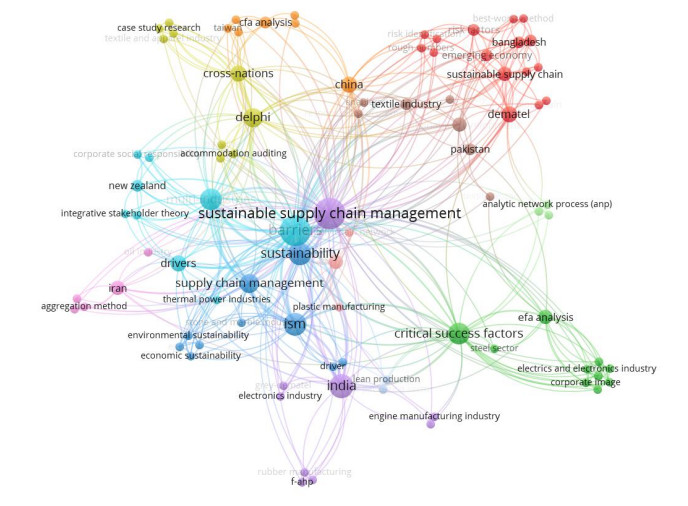









 DownLoad:
DownLoad:



